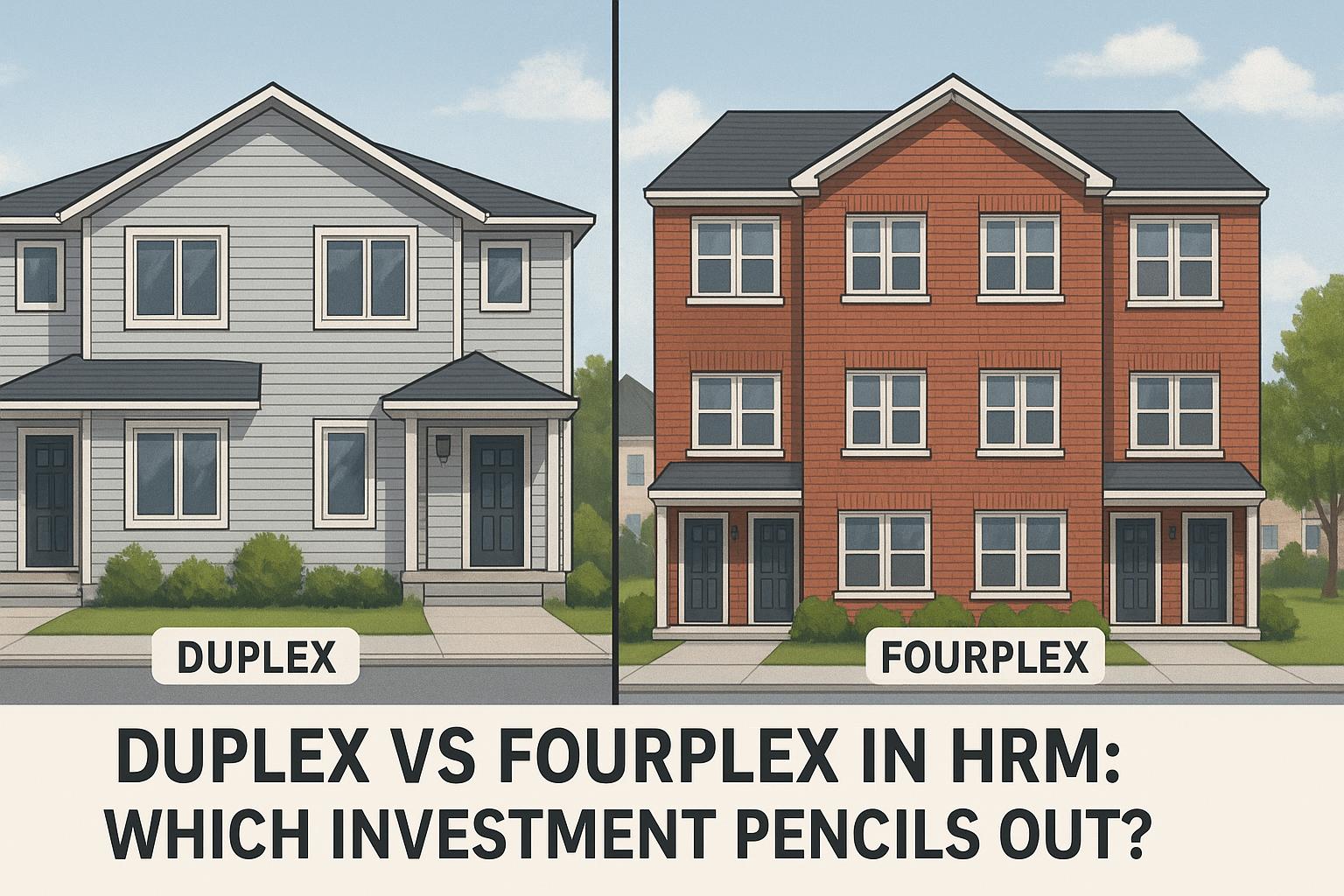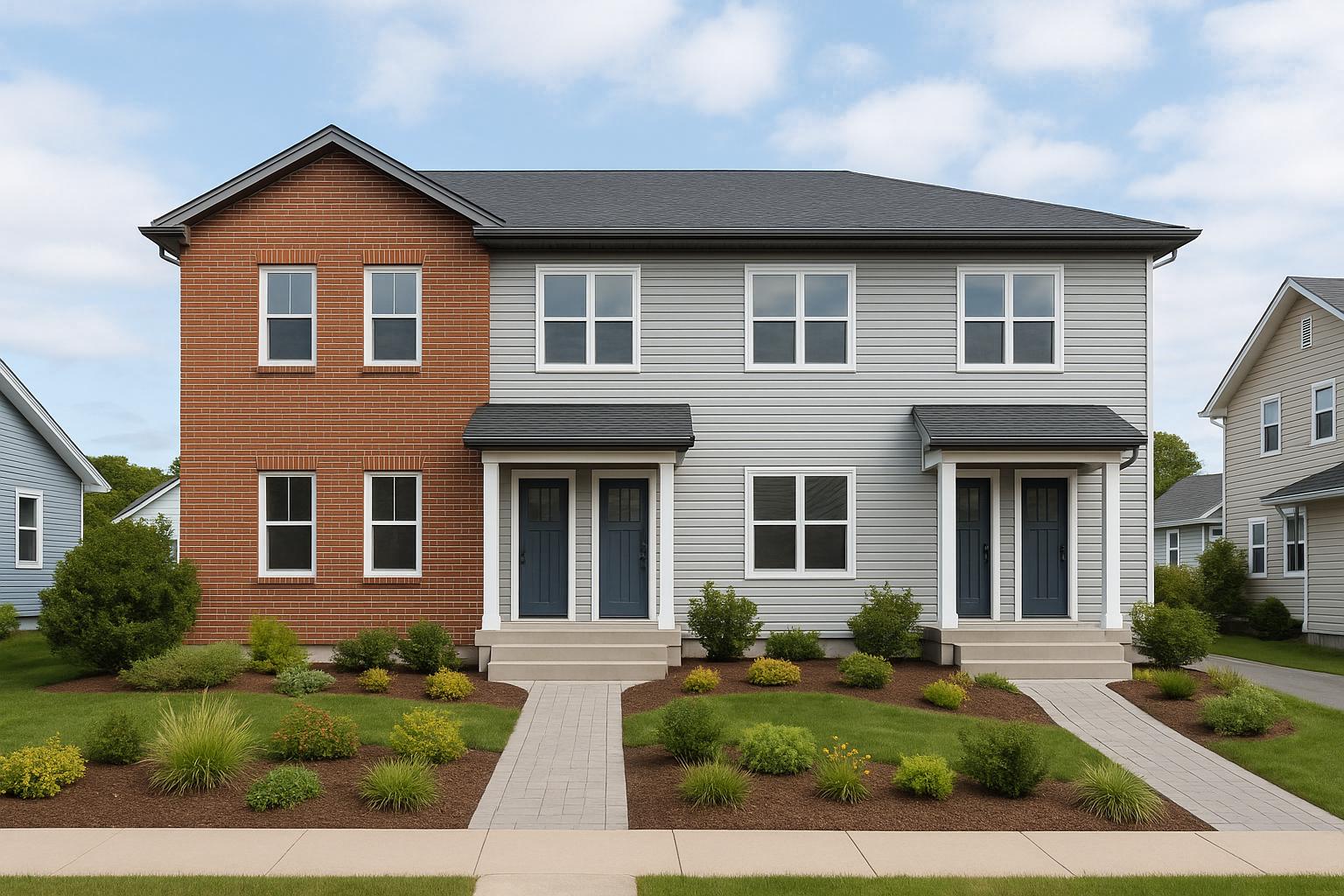Building in Nova Scotia during winter is possible but requires careful planning and the right methods to handle challenges like freezing temperatures, frost, and unpredictable weather. While winter construction can increase costs due to heating, material protection, and slower progress, it can also save time by avoiding peak-season delays. Key strategies include:
- Protecting foundations: Use insulated concrete forms (ICFs) and additives to prevent cracks and ensure proper curing.
- Choosing the right materials: Winter-friendly options like fibre cement siding, metal roofing, and engineered lumber perform better in cold conditions.
- Temporary site protection: Heated tents, concrete blankets, and material storage reduce risks and maintain progress.
- Smart scheduling: Prioritize weather-sensitive tasks early and shift to indoor work during harsher conditions.
- Integrated design-build approach: Ensures better coordination, fixed pricing, and timeline guarantees, reducing risks and delays.
With skilled builders and proper planning, winter construction can be efficient and reliable, even in Nova Scotia's challenging climate.
Winter Construction Challenges in Nova Scotia
Building rental properties during Nova Scotia's harsh winters can be tough on both timelines and budgets. The unpredictable weather and long stretches of sub-zero temperatures create a tricky environment that demands careful planning. Let’s break down how weather, frost, and protective measures can impact your construction project.
Weather Effects on Construction Sites
Winter weather in Nova Scotia often slows or halts construction work. Freezing temperatures not only increase safety risks but also make handling machinery and materials more difficult. Heavy snowfalls add to the challenge, requiring constant clearing that disrupts schedules and drives up costs.
Coastal regions face an extra layer of difficulty, with strong winter winds that can interfere with crane operations and other tasks at higher elevations. The freeze–thaw cycle is another culprit, taking a toll on building materials. Concrete and mortar, for instance, may not cure properly if they freeze too early, while lumber and metal components can warp or become brittle due to sudden temperature shifts. These issues can compromise the integrity of foundations and other critical structures.
Foundation Problems from Frost
Frost poses one of the biggest risks to foundations during winter builds. As the temperature drops, frost can penetrate deep into the soil, with its depth varying based on weather conditions and soil type. This frozen ground expands, creating pressure on foundation walls that can lead to cracks. When the ground thaws, uneven settling often follows, potentially causing structural damage that’s expensive to fix.
Excavating frozen ground is another hurdle. It requires specialized equipment and techniques, which can drag out the timeline for foundation work and inflate costs.
Higher Costs for Weather Protection
Winter construction often comes with extra costs to protect both the site and materials. Temporary heating systems are frequently needed to maintain workable conditions inside partially built structures. Additionally, enclosing work areas with temporary walls, heated shelters, or weatherproof barriers is often necessary to shield the site from snow and wind. These measures not only add to the budget but also require regular upkeep, especially when weather damage occurs.
Protecting materials is another expense. Concrete often needs additives to prevent freezing, while other materials might require weatherproof coverings. Labour costs also climb during the winter, as workers need more breaks and productivity slows due to the harsh conditions.
On top of that, relying on separate contractors for different construction phases can create coordination issues. Delays in one stage can ripple through the entire project, leaving materials and finished work exposed to the elements and driving up costs for repairs or adjustments.
Construction Methods That Work in Winter
Tackling winter construction requires smart strategies that adapt to the season's challenges. Skilled builders know how to work with cold weather, ensuring progress stays on track while maintaining quality and managing costs.
Building with Insulated Concrete Forms
Insulated Concrete Forms (ICFs) are a great choice for building foundations and walls in winter. These modular foam forms are stacked and filled with concrete, and the built-in insulation helps retain heat, allowing the concrete to cure properly, even in freezing temperatures. Unlike traditional concrete pours that often require extra heating and protective enclosures, ICFs reduce the need for these additional steps.
Another advantage of ICFs is their energy efficiency. They provide continuous insulation, which minimizes thermal bridging and creates an airtight building envelope. This results in lower heating costs and more comfortable indoor spaces. Plus, ICF construction holds up well against the freeze–thaw cycles that can damage conventional poured concrete, making it a dependable option for cold-weather projects.
Materials That Handle Winter Weather
Choosing materials designed for winter conditions can prevent delays and lower maintenance costs over time. Some materials perform better in cold weather, while others are built to maintain their durability despite harsh elements.
- Fibre cement siding: This material resists sub-zero temperatures and repeated freeze–thaw cycles better than vinyl siding.
- Metal roofing systems: These are easy to install in winter and are excellent at shedding snow loads. Since metal doesn’t absorb moisture like other materials, it reduces the risk of freeze damage during installation. Additionally, metal roofing can often be installed faster, limiting workers' exposure to extreme weather.
- Spray foam insulation: When applied according to manufacturer guidelines, spray foam works well in cool conditions. It expands to fill gaps, creating an airtight seal that stabilizes indoor temperatures.
- Engineered lumber products: Options like laminated veneer lumber (LVL) and glue-laminated beams offer better dimensional stability than traditional wood, reducing issues like warping or splitting in cold weather.
By combining these materials with a well-coordinated design and construction approach, builders can keep projects on schedule and maintain high standards, even in winter.
Temporary Site Protection Methods
Temporary site protection can make all the difference in winter construction. Instead of enclosing large structures, focusing on specific work areas is often more practical and cost-effective.
- Heated work tents and insulated concrete blankets: These solutions create controlled environments for tasks like concrete curing, electrical work, and interior finishing. Concrete blankets, in particular, help maintain curing conditions without requiring full enclosures, and both options can be easily moved as the project advances.
- Wind barriers and snow fencing: These protect materials and work zones from strong winds and snowdrifts. Properly placed barriers reduce wind chill for workers and minimize snow buildup, cutting down on the need for extensive heating.
- Weatherproof material storage: Designating covered staging areas ensures that materials like drywall, insulation, and electrical components stay dry and accessible. This reduces the risk of damage and saves time during construction.
Using these methods helps protect the site and workers while keeping the project on track. By organizing storage, managing temperatures, and safeguarding materials, builders can handle winter construction with greater efficiency and fewer risks.
How to Schedule Winter Construction
Planning a construction project during the winter months requires thoughtful scheduling. By carefully sequencing tasks and working with the weather, property owners can avoid unnecessary delays and keep their projects on track. Smart scheduling bridges the challenges of winter conditions with steady progress.
Tackling Weather-Sensitive Work First
One effective strategy is to prioritize tasks that are most affected by the weather early on, saving indoor work for harsher conditions. This approach ensures productivity even when the weather turns extreme.
Start with foundation work and waterproofing before the ground freezes. Once those are complete, focus on framing and structural tasks during milder conditions. As soon as the building is enclosed, crews can shift to interior tasks like electrical rough-ins, plumbing, insulation, and drywall. These steps are far less dependent on outdoor conditions, allowing the project to move forward without interruption.
Leveraging Advanced Scheduling Tools
Winter construction benefits significantly from modern scheduling tools that can adapt to changing conditions. Traditional methods often fall short when faced with unpredictable weather and the complexity of coordinating multiple trades. Today’s project management platforms integrate real-time weather data, allowing for dynamic adjustments to construction schedules. For instance, if a cold snap is forecast, outdoor concrete work can be postponed in favour of indoor finishing tasks, ensuring crews remain productive.
Daily coordination calls among trades are another useful tactic, helping to avoid missteps like having electricians arrive before heating systems are operational. Using a unified management system keeps everyone on the same page, minimizing potential delays.
Digital updates also play a critical role. They provide transparency and accountability, preventing minor setbacks from snowballing into major disruptions. When property owners can monitor progress in real time, it builds confidence that the project will stay on track, even in challenging winter conditions.
Adapting Plans to Weather Changes
Flexibility is a must when managing winter construction. Adjusting work plans to suit varying weather conditions - whether mild, moderately cold, or severe - helps crews stay productive.
On milder days, exterior tasks like roofing, siding, and trim work can take priority. When temperatures drop, structural tasks such as framing and sheathing become more practical. During severe cold or storms, the focus can shift entirely indoors to activities like drywall, interior trim, fixture installation, and final inspections.
Keeping extra materials on-site is another smart move. This ensures that work can continue even if weather delays deliveries, turning what might have been downtime into productive hours.
sbb-itb-16b8a48
Reducing Risks with Integrated Design-Build
The integrated design-build approach makes winter construction much more manageable and predictable. Unlike traditional methods that require coordinating multiple independent entities, this approach brings all the key players - architects, engineers, and contractors - under one roof. The result? Better coordination, fixed pricing, and guaranteed timelines that shield property owners from the uncertainties of winter construction.
Better Team Coordination
In traditional construction, delays and miscommunication are common when architects, engineers, and contractors work separately, often with conflicting priorities. Integrated design-build eliminates these headaches by fostering collaboration from the very start. When everyone - planners, architects, and builders - shares the same office and goals, it’s easier to align project phases. For example, weather-sensitive tasks can be scheduled for warmer months, while indoor work is planned for colder periods [2].
Property owners also benefit from having a single point of contact throughout the project. This streamlines communication, simplifies decision-making, and ensures greater accountability [1].
Take Dalhousie University in Nova Scotia as an example. In May 2024, the university invited proposals for a design-build partner for its new Physical Science Facility for Green Energy Innovation. Using a Progressive-Design-Build approach, Dalhousie emphasized collaboration to ensure the project stays on schedule and within budget [3].
This unified approach not only simplifies the process but also ensures predictable pricing and deadlines.
Fixed Prices Prevent Cost Overruns
Another advantage of integrated design-build is cost certainty. Winter weather often causes unexpected expenses in traditional projects. For instance, when temperatures drop near freezing (around 4.4°C), concrete work may require heating and protective measures - costs that can inflate budgets by 30–60%. Integrated design-build firms address this issue by offering fixed pricing before construction even begins. This means property owners know their exact costs upfront, even when winter storms delay material deliveries or crews need additional equipment to work in cold conditions.
By absorbing these risks, integrated firms provide financial peace of mind to property owners.
Timeline Guarantees with Penalties
One of the most powerful tools in integrated design-build contracts is the timeline guarantee, often backed by financial penalties for delays. These penalties incentivize teams to streamline processes, overlap design and construction phases, and respond quickly to challenges [1]. This approach not only accelerates timelines but also ensures flexibility to adapt to changing project needs [1].
Timely completion is especially critical for property owners, as delays can lead to lost revenue. For example, a fourplex generating $7,800 in monthly rent could face significant financial losses if winter delays push completion into spring. Companies like Helio Urban Development address this concern by offering timeline guarantees with penalties of up to $1,000 per day for late completion. This keeps builders motivated to meet deadlines, no matter the weather.
These guarantees work because integrated design-build firms manage every aspect of the project. By having design and construction teams collaborate from the start, they eliminate the need for multiple contracts and improve communication, ensuring projects stay on track [1].
Conclusion: Winter Construction Can Work
Building during Nova Scotia's winter is entirely possible and can even offer advantages when handled by experienced professionals. Success hinges on understanding the unique demands of winter construction, careful planning, and partnering with builders who provide guarantees.
Winter-specific challenges, like fluctuating temperatures and frost-related foundation risks, require skilled teams to navigate effectively. When temperatures hover around freezing, inexperienced crews are more likely to make costly errors. This is where expertise plays a critical role in ensuring the project stays on track and avoids complications.
Thoughtful planning and scheduling are the backbone of successful winter builds. Skilled builders can schedule foundation work during milder weather windows and quickly progress to backfilling and sealing interior spaces, reducing exposure to the cold [4]. This approach eliminates guesswork and replaces it with precise, proactive scheduling.
Using an integrated design-build approach further enhances winter construction. By coordinating every phase of the project from the start, this method ensures fixed pricing and timelines, even during challenging weather. Design and construction teams working in sync can sequence weather-sensitive tasks efficiently, keeping progress steady despite the season.
For property owners, selecting builders who offer fixed-cost and timeline guarantees is essential. This avoids the coordination issues and unexpected expenses that often arise with traditional methods. With the right expertise and planning, winter construction can often outpace spring projects, avoiding the delays and high costs of peak-season demand.
FAQs
What are the advantages of using an integrated design-build approach for winter construction in Nova Scotia?
An integrated design-build method simplifies winter construction in Nova Scotia, offering assured timelines and steady progress, even when the weather is less than cooperative. Unlike traditional construction methods, this approach merges the design and construction phases into a single, unified process, cutting down on delays and miscommunication.
Through the use of weather-resistant materials and carefully planned construction sequencing, this method tackles winter challenges like freezing temperatures and heavy snowfall head-on. The result? Your project stays on schedule, giving you confidence and a smoother path to completion.
How can property owners control extra costs when building during the winter in Nova Scotia?
To handle the extra expenses that come with winter construction - like heating and protecting materials - begin with a thorough project plan that factors in the unique challenges of the season. Working closely with a skilled construction team can uncover ways to save money, such as opting for weather-resistant materials and using energy-efficient heating options.
When winter construction is the only option, expect higher costs and make sure your project schedule is carefully planned to avoid unnecessary delays. By staying organized and proactive, you can navigate the risks and keep your project moving forward, even in tough winter conditions.
What materials and techniques are best for building durable and energy-efficient properties during Nova Scotia's winter?
Building in Nova Scotia during the winter demands thoughtful choices in materials and construction techniques to ensure structures can withstand the elements while staying energy-efficient. For foundations, it's crucial to extend below the frost line - about 1.2 metres - to avoid frost heave. Reinforced concrete paired with proper insulation is key to creating a stable base.
To maintain energy efficiency and protect against moisture, continuous insulation, such as rigid foam or mineral wool, is highly effective. Pair this with air sealing methods like caulking or expanding foam to keep drafts and dampness at bay.
When it comes to roofing, durability and snow load capacity are top priorities. A minimum pitch of 4:12 is recommended, along with materials like metal roofing or architectural shingles that can handle heavy snow. Windows and doors also play a big role in keeping the cold out - triple-pane windows with low-emissivity coatings and insulated doors with weatherstripping are excellent options for preserving indoor warmth.
For the exterior, weather-resistant materials like fibre cement or vinyl siding are well-suited to Nova Scotia's harsh winters. Adhering to local building codes and using CSA-certified materials further ensures the structure's safety and longevity.



